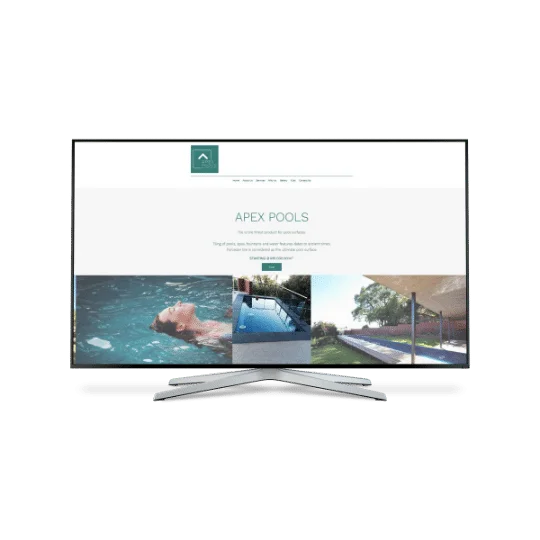Boost Your Brand with Expert Web Design Pretoria Solutions
Boost Your Brand with Expert Web Design Pretoria Solutions
Blog Article
The Essentials of Efficient Website Design for Beginners
Effective web style is a complex self-control that considerably influences user interaction and contentment (Web Design Pretoria). For newbies, realizing the basics-- such as recognizing individual experience, picking an ideal shade scheme, and making sure responsive style-- can be intimidating yet fulfilling.
Comprehending Customer Experience

Key elements of UX include user research, which aids recognize the needs and preferences of the target market, and functionality testing, which analyzes how actual users engage with the site. Intuitive navigating, responsive design, and clear, interesting web content are crucial aspects that add to a positive customer experience.
In addition, the emotional reaction elicited from individuals during their interactions can significantly impact their understanding of the brand name - Web Design Pretoria. A website that prioritizes UX promotes depend on and motivates repeat brows through, eventually driving conversions and customer loyalty. Recognizing individual experience is not merely an alternative for aiming web designers; it is a fundamental concept that underpins successful electronic interactions and affects the total performance of web layout.
Picking the Right Color Scheme
Choosing the appropriate shade palette is frequently a crucial aspect in internet layout that can greatly influence individual understanding and involvement. A well-balanced color system not just boosts the aesthetic allure of a website but likewise plays an important duty in branding and sharing the intended message.
When choosing colors, take into consideration the emotional results they carry users. For example, blue commonly evokes feelings of depend on and integrity, while red can boost exhilaration or seriousness. Utilize shade concept concepts, such as complementary and comparable color design, to produce aesthetic harmony.
Furthermore, make certain that your shade selections line up with your target market and industry standards. Carrying out customer study can provide beneficial understandings into preferred color pattern that resonate with your group. Furthermore, preserving sufficient contrast in between message and history colors is crucial for readability and ease of access, ensuring that all users can navigate your site effortlessly.
Last but not least, consistency is essential; use your shade palette uniformly throughout all pages to strengthen your brand name identity. By thoughtfully picking your color palette, you can develop an engaging individual experience that captivates visitors and urges them to involve with your web content.
Significance of Responsive Design
A properly designed website not just captivates with its color scheme yet likewise adapts seamlessly to numerous devices and screen dimensions. Receptive style is important in today's electronic landscape, where individuals access the web via a myriad of devices, consisting of desktop computers, smart devices, and tablets. Web Design Pretoria. An internet site that fails to get used to different display dimensions threats alienating a considerable part of its target market, inevitably bring about greater bounce rates and diminished user interaction
Additionally, search engines like Google prioritize mobile-friendly websites in their ranking formulas, suggesting that receptive design is not just a user experience enhancement but also a crucial element of efficient seo (SEO) By making certain that your website is receptive, you enhance use, making it less complicated for visitors to communicate and browse with your content, no matter the tool they are making use of.
Integrating receptive style practices, such as liquid grids, flexible images, and media queries, enables an internet site to maintain a enticing and consistent visual across various platforms. This adaptability not only enhances customer contentment but also cultivates brand name reputation and depend on, as individuals are extra likely to engage with an internet site that offers a seamless experience.
Navigating Typography Basics
Typography plays a critical role in internet style, functioning as the visual voice of a site's web content. It encompasses the typefaces, dimensions, spacing, and overall discussion of text, which considerably affects readability and individual experience. To start navigating typography essentials, it's necessary to select a font that straightens with the brand name's tone and message. Serif typefaces typically communicate practice and dependability, while sans-serif font styles task modernity and clarity.
Following, consider font dimension and line height. A basic rule is to utilize a minimum font dimension of 16 pixels for body text to make certain clarity across gadgets. Sufficient line height, typically 1.5 times the typeface size, enhances readability by supplying ample room between lines.
In addition, pay attention to contrast. Text need to stand out versus its history to stay clear of pressure on the reader's eyes. Avoid utilizing way too many different fonts; a combination of 2 or three can produce an unified design. Remember that typography is not fixed; examination different styles and configurations to see what reverberates finest with your target market. Mastering typography will boost your web style, making your website not just eye-catching but additionally practical and easy to use.

Utilizing Aesthetic Hierarchy
At the core of reliable website design exists the principle of visual power structure, which guides users with web content in a method that is both engaging and intuitive. Visual pecking order describes the setup of components on a website to symbolize browse around this web-site their importance with dimension, contrast, positioning, and shade. By employing these methods, developers can lead customers' focus to essential information, enhancing their overall experience.
To establish a clear aesthetic pecking order, beginning by identifying one of the most crucial aspects on your web page, such as headings, contacts us to activity, or pictures. Use larger font styles and bold colors for key headings to make them stick out. Subheadings ought to be a little smaller, keeping a rational circulation that routes the individual's stare downward.
In addition, comparison plays a crucial duty; contrasting colors can make vital elements pop, while consistent spacing produces a clean design that see it here is simple to navigate. Using whitespace properly also enhances readability, permitting customers to concentrate on the web content without really feeling overwhelmed.
Ultimately, a well-implemented aesthetic hierarchy not only improves user engagement but additionally facilitates better understanding, making it an essential element of effective website design.
Final Thought
In summary, effective web design for novices demands a comprehensive understanding of user experience, option of appropriate color combinations, and the application of responsive layout. Focusing on these aspects cultivates an atmosphere favorable to user interaction and complete satisfaction.

At the core of effective internet layout exists the principle of aesthetic hierarchy, which overviews users via content in a method that click over here is both instinctive and appealing.In summary, effective internet style for newbies necessitates a comprehensive understanding of user experience, choice of proper color palettes, and the application of responsive style.
Report this page